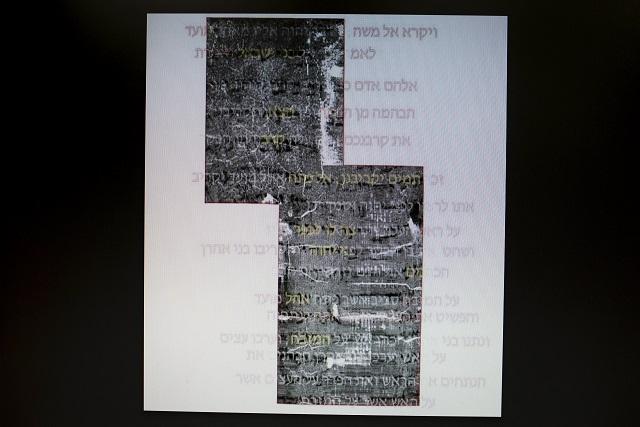
JERUSALEM — Researchers in Israel expressed excitement this past week after successfully using technology to decipher a 1,700-year-old scroll that was discovered in an ark inside of a Jewish synagogue.
“You can’t imagine the joy in the lab,” Pnina Shor of the Israel Antiquities Authority told the Associated Press on Wednesday.
As previously reported, the parchment had been discovered in 1970 among the remains of the ancient Ein Gedi synagogue, located on the shore of the Dead Sea. David had once sought refuge in the caves of Ein Gedi when he was being hunted by King Saul.
In approximately 600 A.D., the synagogue was destroyed by fire, and the scrolls, found over forty years ago, were discovered in the holy ark—a chest that holds parchments containing the Old Testament, known to Jews as the Tanakh.
The scrolls were “completely burned and crushed, [and] had turned into chunks of charcoal that continued to disintegrate every time they were touched,” researchers said. Nonetheless, the chunks were retrieved and placed in storage for preservation and examination.
At the time, forensics could not decipher script on the scroll, but last year, through the use of micro-CT scanner technology, it was believed that the parchment contained the first eight verses of the second chapter of the Book of Leviticus.
Researchers continued to study the parchment via “virtual unwrapping”—a digital scanning technique used at the University of Kentucky—and located an extra column of text containing the first chapter of Leviticus as well. Both chapters speak of the required offerings unto the Lord.
It was also found through radiocarbon dating that the scroll is about 200 years older than originally thought, dating it at approximately 300 A.D., although some researchers believe it could be as old as 50 A.D.
Inspection of the text found it to be exactly the same as the Masoretic text, which is still used in today’s Bibles. The congruity pleased researchers.
“It can’t be coincidental that the synagogue in Ein Gedi that was burned in the sixth century housed an early scroll whose text was completely identical with medieval texts,” Emanuel Tov, one of the authors of the research article released Wednesday by Science Advances, told reporters.
“The same central stream of Judaism that used this Levitical scroll in one of the early centuries of our era was to continue using it until the late Middle Ages when printing was invented,” he said. “This is quite amazing for us. In 2,000 years, this text has not changed.”
Researchers are likewise amazed at the success of the virtual unwrapping technology, which may now be used to help read other ancient and biblical artifacts, such as the Dead Sea Scrolls.
“It’s not only what was found, but the promise of what else it can uncover, which is what will turn this into an exciting discovery,” Noam Mizrahi at Tel Aviv University told the Associated Press.
A special message from the publisher…
 Dear Reader, our hearts are deeply grieved by the ongoing devastation in Iraq, and through this we have been compelled to take a stand at the gates of hell against the enemy who came to kill and destroy. Bibles for Iraq is a project to put Arabic and Kurdish audio Bibles into the hands of Iraqi and Syrian refugees—many of whom are illiterate and who have never heard the gospel.Will you stand with us and make a donation today to this important effort? Please click here to send a Bible to a refugee >>
Dear Reader, our hearts are deeply grieved by the ongoing devastation in Iraq, and through this we have been compelled to take a stand at the gates of hell against the enemy who came to kill and destroy. Bibles for Iraq is a project to put Arabic and Kurdish audio Bibles into the hands of Iraqi and Syrian refugees—many of whom are illiterate and who have never heard the gospel.Will you stand with us and make a donation today to this important effort? Please click here to send a Bible to a refugee >>



